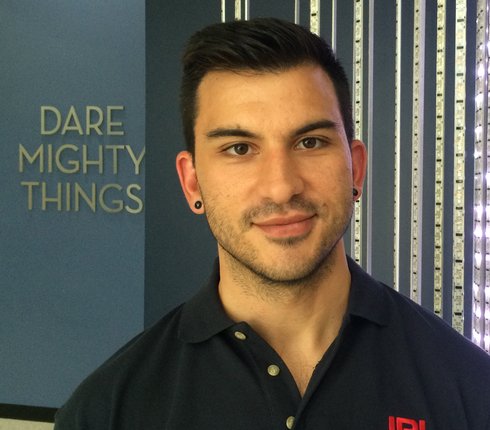Hundreds of physics students from underserved communities participated in the project, constructing their habitats as part of a Next Generation Science Standards, or NGSS, curriculum. One of the key components of NGSS, which was adopted by California in 2013, is its inclusion of science content areas, such as Earth science and physics. The project, drawing upon the lessons found on the JPL Education website, was a chance for students to apply their knowledge of numerous high-school science courses into one summative project. It was also a rare opportunity for the students, who were coming from underserved communities, to see connections between classroom content and real-world science.
"It is difficult for [students] to connect what they do in school with their future," wrote Joshua Gagnier, a physics teacher at Santa Ana High School, who participated in the project. "The only advice they receive is to study, work hard and get help, which without clear goals, are abstract concepts. It is opportunities such as the JPL challenge, which had a tangible academic award, that my students need."
To help students apply their knowledge in a real-world context, teachers presented a challenge to build functional habitats, complete with power, wiring and the ability to withstand the elements. Each school focused on and contributed different components to the habitats, such as solar power or thermodynamics. Students were given broad freedom to construct rooms and devices that were of interest to them while still demonstrating their knowledge throughout the school year. Gagnier had his classes focus on the electromagnetic spectrum and use their understanding of waves – for example, the threat of seismic waves to physical stability and the availability of light waves for solar power – to select a habitat location. He also had students examine the use of solar energy to power their habitats.
"The students used JPL and NASA resources to understand the elevation of [electromagnetic] penetration in combination with Google Earth to find the altitude of the geography they were evaluating," he wrote. "When students were trying to find a way to heat water for their habitat using the limited available supplies, JPL's Think Green lesson was one of the main sources for their solution." This lesson, in particular, allowed students to measure flux and available solar energy at different regions in the country using NASA data available online.
Ultimately, it was up to the students to design and craft their habitats based on the lessons they learned. So the final prototype structures varied dramatically from class to class and even more from school to school. One school focused on habitats powered solely by renewable energy, while another school focused more on the structure's ability to withstand earthquakes via a shake table. Vaughn International Studies Academy worked across class periods to build "modular" homes – with each group building a single room instead of a whole habitat. These rooms, which included a living room, bedroom and even a sauna, were connected to a central power supply. In all cases, students had to quantify the amount of energy produced, determine how to disperse it throughout their home and present a sales pitch for their habitat, describing how it satisfied their criteria.
At the end of the challenge, a winning group from each school was invited to JPL with their teachers to meet students from participating schools and tour the laboratory. It was also a chance for students and teachers to compare their projects. Due to the success of the pilot program, the participating teachers are already making plans for next school year, discussing ways to improve the challenge and expand the program to several more schools in the Los Angeles area.
Looking for ways to bring NASA STEM into your classroom or already have a great idea? The Education Office at NASA's Jet Propulsion Laboratory serves educators in the greater Los Angeles area. Contact us at education@jpl.nasa.gov.
Special thanks to Kris Schmidt, Joshua Gagnier, Sandra Hightower and Jill Mayorga for their participation and dedication to bringing NASA science to their students.




